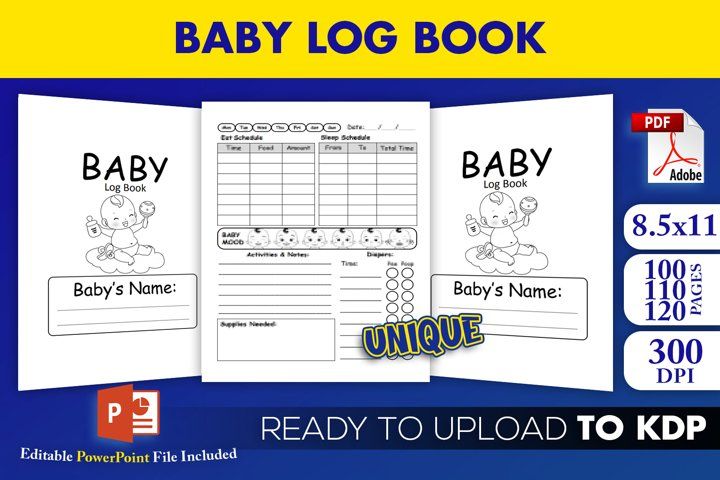When do babies settle into a feeding routine
Baby schedules: When to start a daily routine with your baby
Many parents find that getting into a daily routine with their baby makes life much easier. To create a general schedule, observe when your baby naturally likes to eat, sleep, and play. Newborns eat and sleep around the clock, but starting around 2 to 4 months, you may start to observe patterns and establish a routine. Start by practicing a consistent bedtime routine every night, and plan to do roughly the same things at the same time every day.
Why are baby schedules useful?
A baby's needs aren't that complicated – food, sleep, play, and love pretty much sums it up. But knowing what your baby requires when, and how much of it, can be a real challenge. Not to mention balancing your baby's needs with your own and those of older children and other family members.
Many parents find that getting into a regular routine or schedule with their baby makes life much easier: It's almost like developing a personalized how-to manual for your child. As a parent, you'll have a predictable pattern for your days with your little one. And your baby will know what to expect – for example, that they get a bottle after their morning nap, then playtime or an outing.
Babies like to know that certain things will happen at a certain time each day. An added bonus: When you're ready to try leaving your baby with a sitter, the transition will be easier. Your baby will be reassured by their usual routine, and your caregiver will be able to anticipate their hunger, sleepiness, or desire to play or go out.
When to start a routine with your baby
Experts disagree on when and how to establish a routine – and even on whether you need a set schedule for your baby. But many say that babies are ready for a general schedule between 2 and 4 months of age.
Most infants' sleeping and feeding habits become more consistent and predictable after three or four months. You may want to take this opportunity to encourage your baby to follow a more defined schedule.
Your baby may fall into fairly predictable patterns long before this, however. If that's the case, you can gently encourage your baby's emerging routine.
Tracking your baby's eating, sleeping, and alert times can give you an understanding of their natural rhythms and enable you to pinpoint developing patterns. In the days following delivery, many parents begin to write down or log when their newborn eats, when they poop and pee, when they sleep and for how long, and so on.
When figuring out your baby's schedule, it's essential that their well-being comes first. That means following the advice of your baby's doctor, plus your gut feeling and common sense, to determine what your baby needs when – no matter what a particular expert, book, or method says.
During the newborn period, it's especially important that your baby get enough breast milk or formula to avoid problems like poor weight gain and dehydration. Babies should be fed when they're hungry – that is, fed on demand – according to the American Academy of Pediatrics (AAP). This means looking for your baby's hunger cues. Never withhold food or sleep when your baby seems to need it because it's not the "right" time.
This means looking for your baby's hunger cues. Never withhold food or sleep when your baby seems to need it because it's not the "right" time.
Advertisement | page continues below
How to establish a baby schedule
Getting into a regular schedule for sleep, feeding, and activities can make life easier for you and your baby. But how to start? Below, find some helpful guidelines for establishing a routine that works.
Get your baby used to a bedtime routine early on
Babies don't have regular sleep cycles until around 6 months old, according to the AAP. While you can't force babies to be predictable in the first few months, you can develop a consistent routine that's in sync with your baby's natural rhythms. The easiest way to develop a regular bedtime is to create a bedtime routine that you and your baby can depend on night after night.
Keep the routine simple – for example, a warm bath, jammies, a feeding, then lights-out. It's fine if feeding lulls your baby to sleep in the early months, but by 3 or 4 months you may want to try putting them down awake so they'll learn to fall asleep on their own.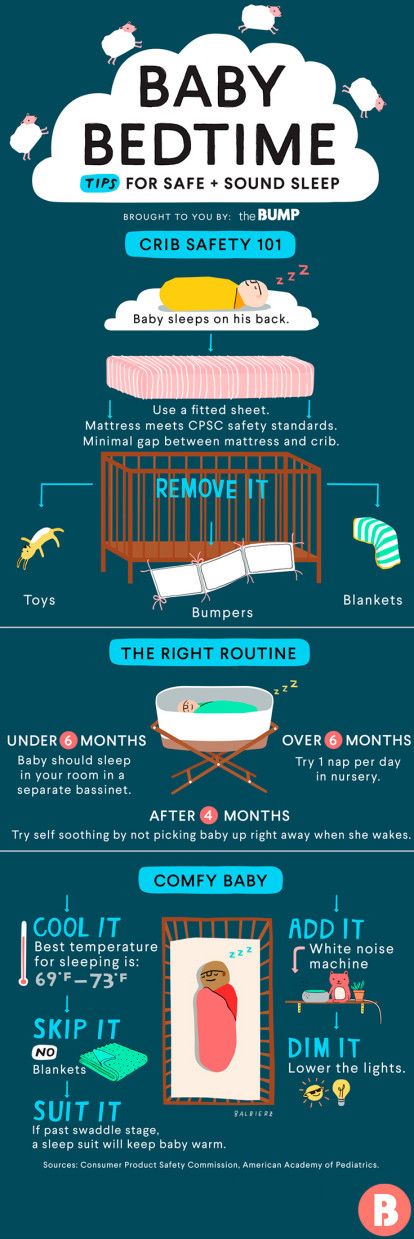 For more helpful information on establishing a bedtime routine, as well as other sleep tips, check out Baby Sleep 101, our premium class led by a pediatric sleep doctor from BabyCenter Courses.
For more helpful information on establishing a bedtime routine, as well as other sleep tips, check out Baby Sleep 101, our premium class led by a pediatric sleep doctor from BabyCenter Courses.
Teach your baby the difference between night and day
Many babies mix up their days and nights until about 3 to 4 months, sleeping long stretches during the day only to perk up once the sun goes down. Helping your baby learn to tell day from night is a key first step to getting into a workable routine.
Learn to read your baby's cues
Websites, books, your baby's doctor, and other parents can all help as you figure out an appropriate schedule for your baby. But your child is the most important guide and will tell you what they need – if you learn to read their cues.
Learning what your baby needs when takes time and patience. But you'll see patterns emerge over time. And if you log your baby's naps, feedings, and active times, you can use this record to come up with a timetable for doing things.
When starting out, put your baby's schedule first
If you're encouraging your baby to follow a schedule or observing their patterns to figure out a routine that works, make this process a top priority for at least the first couple of weeks. Avoid deviating from the routine with vacations, meals on the go, or outings that push naptime back.
Once you establish a pattern for your baby's sleeping, awake, and feeding times, changing things for an afternoon isn't likely to undo their habits. But it's best to keep your baby's schedule as consistent as possible while they're getting used to it.
Expect changes during growth spurts and milestones
Your child accomplishes so much in the first year. They'll nearly triple their weight and achieve some major feats like sitting up, crawling, and perhaps even walking.
During periods of growth or when they're working to achieve a new milestone, don't be surprised if your baby diverges from their usual routine. They may be hungrier than usual, need more sleep, or return to waking up several times a night. Babies and toddlers regularly have sleep regressions as they approach big developmental leaps. Hang in there – your baby may be back on schedule shortly, or this may be a sign that you need to adjust your routine.
Babies and toddlers regularly have sleep regressions as they approach big developmental leaps. Hang in there – your baby may be back on schedule shortly, or this may be a sign that you need to adjust your routine.
Adjust your baby's schedule to suit their age
It may feel like just when you've gotten into a predictable groove with your little one, it's time to change it again. As your baby gets older, they'll need fewer daytime naps and more playtime and stimulation. They'll also need to eat solid foods – first just once a day, but eventually several times a day. As these developmental shifts happen, your child's schedule will shift as well.
Don't expect perfection
Some parenting experts set the expectation that your baby's routine will always run like clockwork. And though babies do like consistency, you can expect changes from day to day and as your baby grows.
Sometimes, for whatever reason, your baby will want to skip a nap, have an extra snack, wake up before dawn, and so on.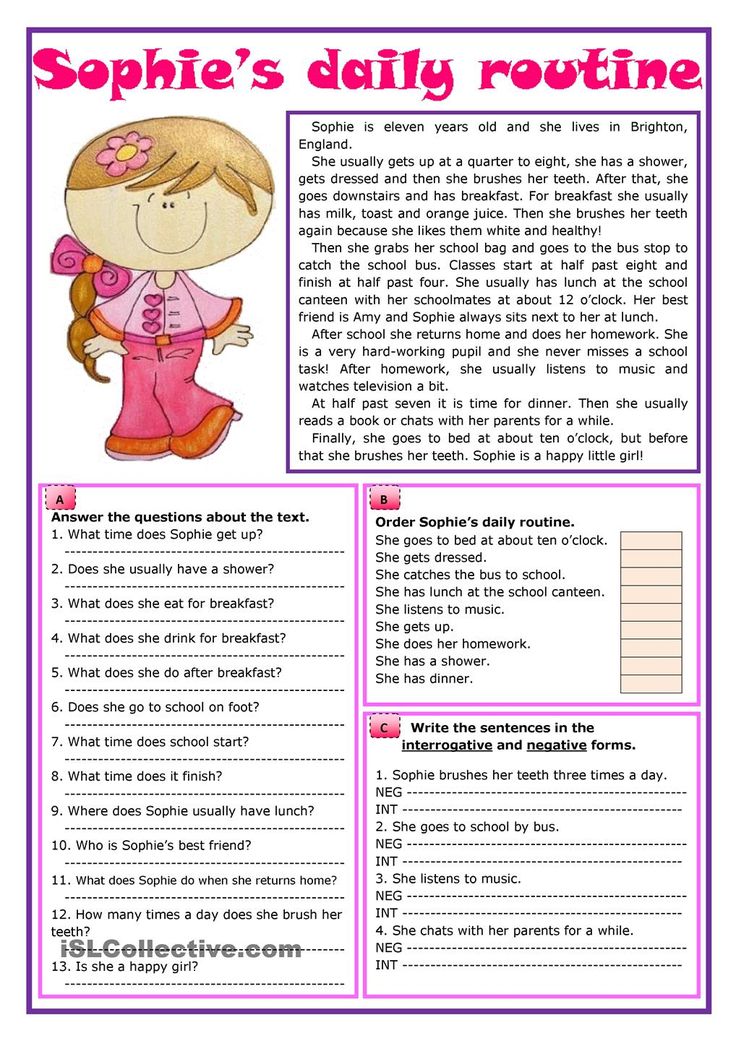 And life happens as well – vacations, older siblings, plans with friends and family, errands you need to take care of, and other factors will all come into play in your daily life with your baby. Variation is okay, as long as your baby is getting the sleep, play, food, care, and love they need to thrive.
And life happens as well – vacations, older siblings, plans with friends and family, errands you need to take care of, and other factors will all come into play in your daily life with your baby. Variation is okay, as long as your baby is getting the sleep, play, food, care, and love they need to thrive.
Sample baby schedules
Wondering how other parents set up their baby's schedule, and what pediatricians recommend? See sample schedules and expert advice for babies of all ages:
- 1- or 2-month-old baby schedules
- 3- or 4-month-old baby schedules
- 5- or 6-month-old baby schedules
- 7- or 8-month-old baby schedules
- 9- or 10-month-old baby schedules
- 11- or 12-month-old baby schedules
And for everything you need to know about baby sleep, check out our monthly sleep schedules:
- Newborn sleep guide
- 2-month-old sleep guide
- 3-month-old sleep guide
- 4-month-old sleep guide
- 5-month-old sleep guide
- 6-month-old sleep guide
- 7-month-old sleep guide
- 8-month-old sleep guide
- 9-month-old sleep guide
- 10-month-old sleep guide
- 11-month-old sleep guide
What You Need to Know About Establishing Baby Schedules
So you’re interested in baby schedules. Well, you’re on the right track. After all, getting into a groove—you know, a rhythm of events that happen each day at around the same time—can be good for you and baby. “Babies come into the world as a blank slate, and they depend on you to teach them routine,” says Nina Vaid Raoji, RN, MSN, APN, author of Raising Baby: A Pocket Guide to Baby’s First Year. “When the same thing is done at approximately the same time interval, baby quickly learns the sequence and will anticipate the next step.” The sense of familiarity that results from a schedule can be a big comfort to baby. Plus, getting into a daily routine can help you stay sane. “Once baby adapts to the set schedule, you can make plans accordingly knowing that during certain times baby will be sleeping or will need to eat,” Raoji says. So when’s the right time to establish those baby schedules? And how should you go about it? Read on for answers.
Well, you’re on the right track. After all, getting into a groove—you know, a rhythm of events that happen each day at around the same time—can be good for you and baby. “Babies come into the world as a blank slate, and they depend on you to teach them routine,” says Nina Vaid Raoji, RN, MSN, APN, author of Raising Baby: A Pocket Guide to Baby’s First Year. “When the same thing is done at approximately the same time interval, baby quickly learns the sequence and will anticipate the next step.” The sense of familiarity that results from a schedule can be a big comfort to baby. Plus, getting into a daily routine can help you stay sane. “Once baby adapts to the set schedule, you can make plans accordingly knowing that during certain times baby will be sleeping or will need to eat,” Raoji says. So when’s the right time to establish those baby schedules? And how should you go about it? Read on for answers.
What Baby Schedules Actually Look Like
Forget expecting morning feedings to start at 6:00 a. m. on the dot every day, or for baby to go down for his morning naps at exactly 9:00 a.m. Baby can’t tell time—and you’re not a drill sergeant. Babies will be hungry when they’re hungry and sleepy when they’re sleepy. The keys to getting a schedule down is responding to baby’s existing cues, taking into account the loose routine he’s already keeping, making it work with your day-to-day and establishing it a little more definitively.
m. on the dot every day, or for baby to go down for his morning naps at exactly 9:00 a.m. Baby can’t tell time—and you’re not a drill sergeant. Babies will be hungry when they’re hungry and sleepy when they’re sleepy. The keys to getting a schedule down is responding to baby’s existing cues, taking into account the loose routine he’s already keeping, making it work with your day-to-day and establishing it a little more definitively.
For example, maybe you’re finding that baby is hungry after naptime and then seems energetic afterwards. In that case, a “sleep, eat, play” routine could work for your family. Some days, baby will wake up a little earlier than other days, or her feeding will last a little longer, but generally you and baby hold the same sort of pattern and timing from one day to the next. You can call that a solid baby schedule.
When to Set Baby Schedules
If you’ve got a 2-week-old, forget baby schedules and just go with the flow for now. Babies get into rhythms starting around 3 months of age, says Cheryl Wu, MD, a pediatrician at LaGuardia Place Pediatrics in New York City. “At 3 months, you’ll notice that baby has some sort of pattern throughout the day,” Wu says. “Usually around 6 months, they’ll get into a rhythm for nighttime sleep, sleeping about 12 hours at night and waking up two or three times throughout the night. A daytime schedule emerges for most babies around 9 months of age.”
“At 3 months, you’ll notice that baby has some sort of pattern throughout the day,” Wu says. “Usually around 6 months, they’ll get into a rhythm for nighttime sleep, sleeping about 12 hours at night and waking up two or three times throughout the night. A daytime schedule emerges for most babies around 9 months of age.”
How to Create Baby Schedules That Work
Just how easily moms can implement their baby schedules—and how rigid they end up being—depends on each baby’s personality, no matter the age. “There are three kinds of babies,” Wu says. “Ones who are very easy to get on a schedule, ones who are very difficult to get on a schedule and ones who are somewhere in between.”
“Ask yourself, ‘Do I have a baby that will respond to a schedule, or not,’” she suggests. You might love the idea of a baby schedule, but if your child’s not having it, it might just stress both of you out trying to create one.
And remember, getting baby on a schedule means tweaking the routine a little—maybe you extend the time before a bottle or move up bedtime in 10-minute increments here and there. But you don’t want to starve a hungry baby or keep a sleepy baby up so late that he gets overtired. (Believe us, you’ll be sorry you did.)
But you don’t want to starve a hungry baby or keep a sleepy baby up so late that he gets overtired. (Believe us, you’ll be sorry you did.)
Your baby’s personality will also clue you in on whether to implement a baby-led routine or a parent-led one. “Baby-led schedules mean that parents follow the baby’s cues for feeding, sleeping and play,” Raoji says. “Parent-led schedules require ‘training’ baby to feed at certain times, sleep at certain times and play in between as desired.” Baby-led routines tend to be easier on baby and easier to make happen— you’ll just have to make room for more flexibility from day to day.
So how can you figure out what baby’s natural routine looks like? Keeping a log of baby’s day-to-day every day for months is simply not realistic (and will make you completely insane!), but in the beginning, when you’re developing your baby schedule, it’s helpful to write down when your child sleeps, eats and plays. That way you can pinpoint patterns in his day and plan his schedule around him. “You also want to make sure baby’s feeding and peeing and pooping enough,” Raoji says. “After the first couple weeks, I would recommend logging feed and sleep times every month or two for a few days just to see if baby’s schedule is still the same or changing.”
“You also want to make sure baby’s feeding and peeing and pooping enough,” Raoji says. “After the first couple weeks, I would recommend logging feed and sleep times every month or two for a few days just to see if baby’s schedule is still the same or changing.”
And if you’re totally stumped about what baby’s schedule should be, or how to get her there, you can bring your notes to baby’s pediatrician for some help. “I can usually see a pattern,” Wu says. “If you’re at your wit’s end, bring the information to a person who’s not as affected by how your child is sleeping as you are.” Together, you and the doctor can come up with a plan to create a schedule that will work for both you and baby.
As baby gets older, she’ll get used to the routine and better stick to it. And she’ll probably become more adaptable, so you’ll be able to tweak it a bit—maybe even skip that late afternoon nap and head to the park once in a while.
But, we hate to break it to you, just when you two seem to have the whole baby schedule thing nailed down, your kid might make a big change. “At times, you may feel like you have taken a few steps backwards, like during baby growth spurts or if baby is sick,” Raoji says. Baby might decide she’s done with that late afternoon nap, and there might not be anything you can do about it. That’s okay, but you might have to start putting her to bed earlier at night. Just consider this baby’s next phase and see this as a new, slightly different routine.
“At times, you may feel like you have taken a few steps backwards, like during baby growth spurts or if baby is sick,” Raoji says. Baby might decide she’s done with that late afternoon nap, and there might not be anything you can do about it. That’s okay, but you might have to start putting her to bed earlier at night. Just consider this baby’s next phase and see this as a new, slightly different routine.
Baby Schedule Mistakes to Avoid
• Keeping baby up too long. “If baby’s under 6 months old, within two hours of waking, she should be asleep again,” Wu says. “Some parents don’t realize when their baby’s overtired. They may show it if they seem to have gotten enough sleep but are cranky when awake.”
• Going against baby’s natural rhythm. “Say a kid is very irregular and mom tries to put him on a very regular schedule. It’s just not going to work,” Wu says. “Some babies will be fine, but others have a stress reaction and the routine gets completely screwed up. You may have to use some trial and error to see what works for your child.”
You may have to use some trial and error to see what works for your child.”
• Pulling a sudden switcheroo. “Slight changes in routine won’t affect baby too much,” Raoji says. “But a big change in schedule like a missed nap or a delayed feeding may leave you with a really cranky kid. When it comes to baby schedules, your child has learned to anticipate the next step, and when that routine gets messed up, they can become very irritable.”
Real Baby Schedules From Other Moms
It can also help to get the perspective of other parents going through the same things as you. Have mom friends with babies the same age as yours? Ask them what kind of baby schedules their children keep. Or go on The Bump message boards to make new pals.
Curious to see some sample baby schedules? See below for routines that other families have found work for them, broken down by different age groups:
Please note: The Bump and the materials and information it contains are not intended to, and do not constitute, medical or other health advice or diagnosis and should not be used as such.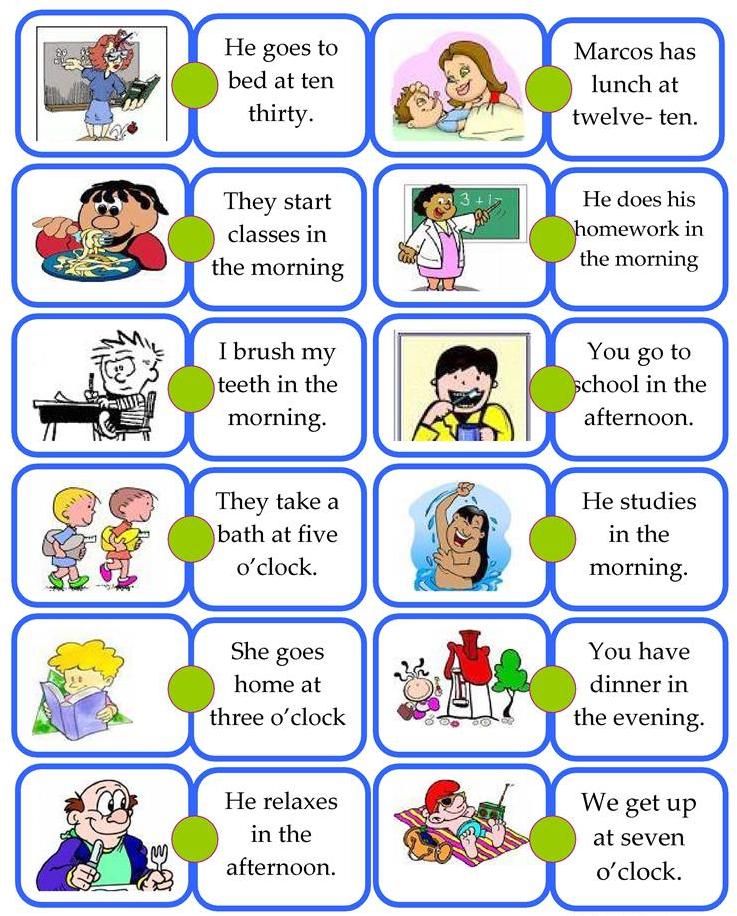 You should always consult with a qualified physician or health professional about your specific circumstances.
You should always consult with a qualified physician or health professional about your specific circumstances.
Plus, more from The Bump:
How Much Sleep Baby Needs
Scheduling Baby’s Naps
10-Minute Workouts To Do While Baby Naps
Daily routine for a child under 1 year old
Daily routine is a system for distributing periods of sleep and wakefulness, meals, hygiene and health procedures, activities and independent human activities throughout the day.
Compliance with a rational daily routine corresponding to the age characteristics of the child contributes to his healthy growth and development. Getting used to performing various types of activities at the same time, the child is prepared for the upcoming type of activity at every moment of time, which ensures their easier and faster implementation. Compliance with the correct daily routine provides a good mood for the child and maintains a keen interest in the study of the world around him, contributing to his normal motor and psychoverbal development.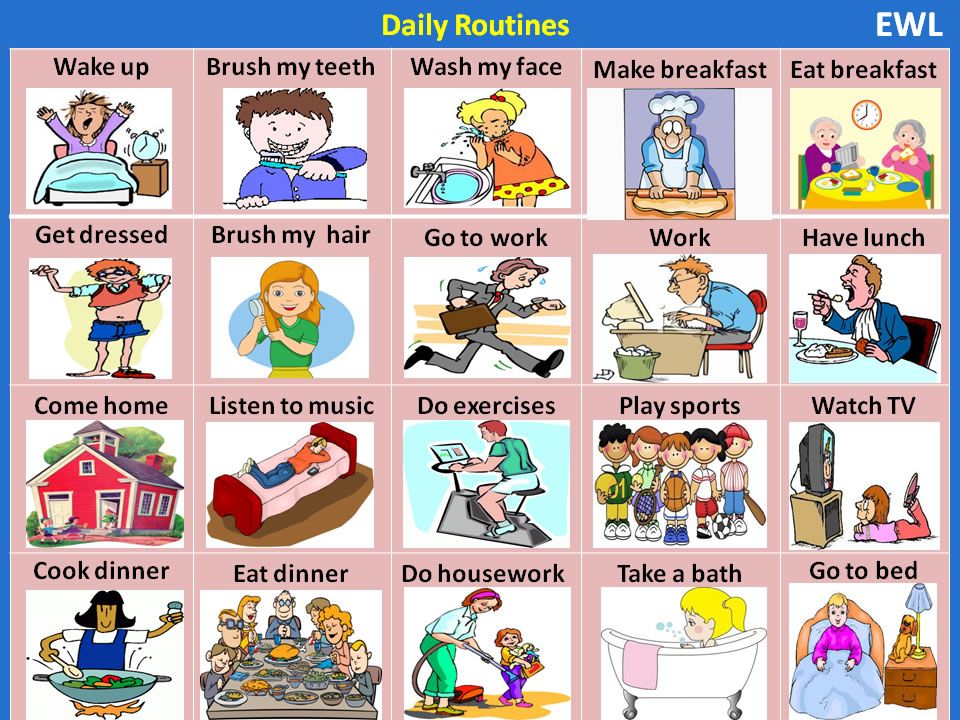
The child's daily routine includes the following obligatory elements: diet, time spent outdoors during the day, frequency and duration of sleep, mandatory classes to develop skills in accordance with age, free time.
In the first months after birth, a healthy newborn baby sleeps for most of the day, since all external stimuli are very strong for the nervous system of a child, accustomed to a cozy intrauterine environment, and cause its rapid exhaustion. As the child grows older, the duration of sleep gradually decreases and the time of wakefulness increases.
| Age | Daytime sleep mode | Night sleep | Wake mode |
| From birth to 2 months | 6 x 2.5 hours | 6 hours | During feeding |
| 2-4 months | 5 times 2-2.5 hours | 6.5 hours | 4 x 1.5 hours |
| 4-6 months | 4-5 times for 2 hours | 7 hours | 4 times 2 hours |
| 6-9 months | 3-4 times for 1. 5-2 hours 5-2 hours | 8 hours | 4 x 2.5 hours |
| 9-12 months | 2 x 1.5-2 hours | 9-10 hours | 4 times for 3-4 hours |
Closely related to the sleep-wake mode is the feeding mode of the baby. The sleep of a child in the first months of life is very sensitive and is easily disturbed under the influence of various extraneous stimuli, including hunger.
| Age | Mode | Example |
| From birth to 2 months | 7-8 times, every 3 hours | 6,9,12,15,18,21,24 (no night feeding) |
| From 2 to 6 months | 6-7 times, every 3.5 hours | 6, 9.30, 13, 16.30, 20, 23.30 (without night feeding) 6, 9.30, 13, 16.30, 20, 23.30, 03 (with night feeding) |
| From 7-12 months | 5 times, every 4 hours | 6,10,14,18,22 |
A child's stay in the fresh air is essential in the daily routine. The total duration of stay in the open air for children under 1 year of age should be at least 5-6 hours a day. Fresh air has a calming effect on the baby, improves metabolic processes, and increases the body's defenses. In the summer, all games and activities should be held outdoors; in the cold and transitional seasons, two one-time walks of 1.5-2 hours are provided.
The total duration of stay in the open air for children under 1 year of age should be at least 5-6 hours a day. Fresh air has a calming effect on the baby, improves metabolic processes, and increases the body's defenses. In the summer, all games and activities should be held outdoors; in the cold and transitional seasons, two one-time walks of 1.5-2 hours are provided.
Fresh air also has a beneficial effect on sleep. By acting on the skin and mucous membranes of the nose and upper respiratory tract, it provides a faster fall asleep of the child and a higher quality of sleep. Sleeping outside can replace a walk, especially during the cold season.
The child's daily routine is generally individual, but ideally, one should strive to ensure that the child eats after waking up, and then stays awake until the next sleep. A well-slept baby eats with appetite and then calmly and actively plays or engages, and tired of games, easily goes to sleep.
When your baby is awake, try to keep him active and cheerful. It is necessary to dress the child in loose clothing that does not hinder movement, provide access to toys appropriate for his age, and most importantly, actively participate in games and activities with the baby as a whole family.
It is necessary to dress the child in loose clothing that does not hinder movement, provide access to toys appropriate for his age, and most importantly, actively participate in games and activities with the baby as a whole family.
Author - Physiotherapist - DMITRIENKO T.G.
Daily routine of a child at 2 years old
Let's talk about the daily routine of a child from 6 months to 2.5 years old. It is important to know that already from the age of 6 months you can slowly form the baby's daily routine.
Many parents are intimidated by the word “regime”. But children love the routine and quickly get used to the regime. Children generally like predictability in the daily routine, it calms them down, gives them a sense of security. Children's sleep will be calmer if it is organized at the usual time and in the usual order.
Until about 3 months of age, children have practically no regimen, and up to 6 months there is a little chaos. But from six months on, we recommend determining the optimal regimen for the baby and trying to stick to it as much as possible. This is the key to a restful and quality sleep for your child.
This is the key to a restful and quality sleep for your child.
What is mode?
Under the regime we mean the change of sleep and wakefulness during the day. The mode of babies from 6 months is tied to the watch, the mode of younger babies is formed according to signs of fatigue.
The following should be recorded in the daily routine:
- wake up time in the morning
- time of active and calm wakefulness
- daytime sleep
- walks
- meals
- sleep preparation
- night sleep
It is very important to find a comfortable mode for your baby. Please note that all norms and recommended modes are given for guidance. They cannot take into account the individual characteristics of the child, the load and temperament.
It is very important to adjust the regimen as the child grows. The baby grows up - he can withstand longer periods of activity (awake time), and sleep becomes less and less. The task of the mother is to observe the changes and adjust the daily routine in time.
The baby grows up - he can withstand longer periods of activity (awake time), and sleep becomes less and less. The task of the mother is to observe the changes and adjust the daily routine in time.
How to find the best mode for your child?
In order to choose the optimal regimen, it is important to monitor the child and a sleep diary, analyze the situation and compare it with the norms. You will find all the important steps for analyzing and adjusting the regime in our article. 1. Analyze how your day goes with your child If the daily routine is not comfortable for the baby, even with the right actions, you will see a long fall asleep or protests when trying to fall asleep on your own.
We have prepared a checkbox of 8 points by which you can easily check whether the regimen is suitable for the child:
- Does the baby get enough sleep at night? YES/NO
- Is the number of daytime naps appropriate for age? YES/NO
- Duration of one daytime nap at least 40 minutes (for babies over 3 months old) YES/NO
- Baby maintains wake time (WT) according to average values for this age YES/NO
- Falling asleep in the evening falls within the baby's "sleep window" YES/NO
- The baby has an even mood during the day, he is not naughty for no apparent reason YES / NO
- It takes a baby an average of 15-20 minutes to fall asleep YES/NO
- On mode:
- active wakefulness YES/NO
- quiet wakefulness YES/NO
- bedtime rituals YES/NO
Analyze the situation. If at least one item you answered NO, it is worth working on the routine. If you need tips on how to do this, join our Video tutorials and Webinars. This is enough to discuss the problems of the regime or, for example, switch to fewer sleeps without compromising the well-being of the baby.
If at least one item you answered NO, it is worth working on the routine. If you need tips on how to do this, join our Video tutorials and Webinars. This is enough to discuss the problems of the regime or, for example, switch to fewer sleeps without compromising the well-being of the baby.
VIDEO TUTORIALS
Baby Sleep Lessons
0-7 years old
More
2. Mandatory elements of the daily routine of a child from 6 months to 2.5 years
If you have come to the conclusion that some signs of an inappropriate daily routine are present, then it is time to start transforming already established habits and get closer to the recommended daily routine.
What common features do we see in the mode of all children aged 6 months to 2.5 years?
- all children should have a good night's sleep, the average duration of which is eleven hours
- the so-called biological clock of children is set to the beginning of the day and active wakefulness from 7:00-7:30 am
- the total daytime sleep time should average from three and a half hours in six months to two hours in two years.

Thus, we come to a fairly easy arithmetic problem: “If children have to get up at seven o’clock in the morning, and they have to sleep at eleven or twelve o’clock at night, then when should our babies be put to bed in the evening?”
The answer is simple: “The best time to start a night's sleep is between 19:00 and 20:00, at which time the child should already be asleep.
So, wake-up time is 7:00-7:30, lights out at 19:00-20:00.
3. Daytime sleep mode
The quality and quantity of daytime sleep affects nighttime sleep. Therefore, daytime sleep is a very important component of the baby's regimen.
- A 6-month-old baby has 2 full or 3 short naps in the daily routine
- Starting from 7 - 8 months, the third dream gradually disappears. The smoothness lies in the fact that, depending on the duration and quality of the first 2 dreams, sometimes a 3rd dream is also needed so that the child has the opportunity to reach the night sleep, and on some day this additional sleep is not required.

- After 15 months, the 2nd nap leaves. Do not rush to get rid of the second sleep earlier, it is necessary for most children before this age so that the nervous system can rest. When following a daily routine with two dreams, children feel much better.
- The most important rule is that you should never organize the 3rd sleep after 16:30 . If the child is naughty, then it is better to put him to sleep earlier, at about 18:30.
Do not forget that as the child grows older, the time of wakefulness between the first and second sleep increases slightly. At the same time, the morning dream remains approximately at the same place.
In general, try to stick to the limits:
- morning sleep starts at 8.00-10.00,
- daytime sleep 12.30-15.00
- the time intervals of wakefulness between daytime sleeps should not be equal to each other.
4.
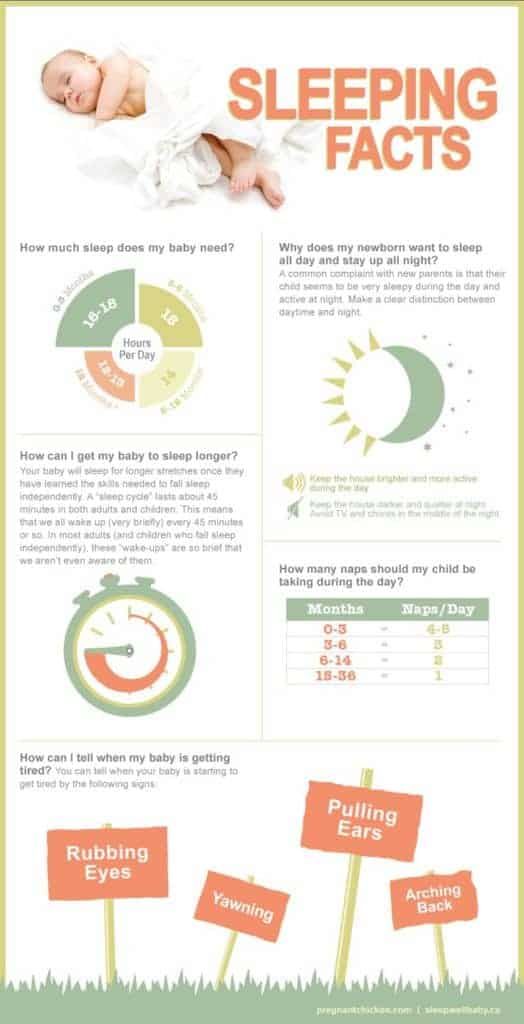 Meals in the daily routine
Meals in the daily routine When breastfeeding we generally recommend that you feed your baby after waking up or in the middle of wakefulness in order to separate the processes of feeding and falling asleep in the baby's mind. At the same time, there is a grandmother's rule, which is not without common sense: "Only a well-fed child sleeps well." There is a risk that a growing child, who is more and more awake, will have time to get hungry before the next sleep.
from 6 months, as complementary feeding (which by 8 months is already wearing an energy, rather than introductory, character), it becomes important to observe the regime daily so that the child’s body is tuned in to a certain sequence of actions.
In addition to sleep time, it is desirable to record feeding times , there are five of them: breakfast, lunch, dinner, afternoon tea and second breakfast (the last two are snacks). At the same time, it is logical to organize breakfast and lunch before daytime sleep, second breakfast and afternoon tea - after waking up from daytime sleep. We recommend having dinner early enough - 1.5-2 hours before bedtime, i.e. around 17-18 hours. In addition to dinner, most children in their first year of life require feeding just before going to bed.
After a year, there is a direct dependence between the quality of sleep and the amount of eaten immediately before bedtime, so it is worth starting to organize a pause between the last meal and sleep in order to proudly note that you and your child are taking the first steps to a healthy lifestyle.
Correction of the regimen
If you have begun to adjust the daily routine, then do not make sudden jumps, change the regimen gradually, starting with evening bedtime, in increments of 15-20 minutes. And watch the child's reaction to the changes for 3 days. Fix the time of the morning awakening - do not prolong sleep after 7.30 am or wake the baby if he sleeps too long. Sleep after 7:30 in the morning knocks down the entire daily routine. Remember that early awakenings are getting up before 6 in the morning. It is desirable to extend them. And the comfortable time for getting up according to the biorhythms of the child is from 6 to 7:30 in the morning.
It is desirable to extend them. And the comfortable time for getting up according to the biorhythms of the child is from 6 to 7:30 in the morning.
For example, a child goes to sleep at 10:00 pm and wakes up at 9:00 am. During the first 3 days, start lifting 15-30 minutes earlier than usual. If you wake up the baby in the morning at 8.30-8.45, then organize daytime naps in accordance with a comfortable WB for a child at this age, focusing on signs of fatigue. And in this case, plan a night's sleep at 21:30-21:45. Next 3 days: wake up 8:00-8:15, evening bed around 21:00-21:15. Etc. Ideally, we move towards getting up at 7-7:30 and going to bed at 19:30-20:30.
Daily routine is the most important thing:
- KIDS LOVE THE REGULATION , they are calmed by predictability
- Up to 6 months it is impossible to talk about the regimen, but after 6 months it is important to determine the optimal regimen
- Early mode is the most ideal mode for children: wake up at 7:30; lights out 19-20.




